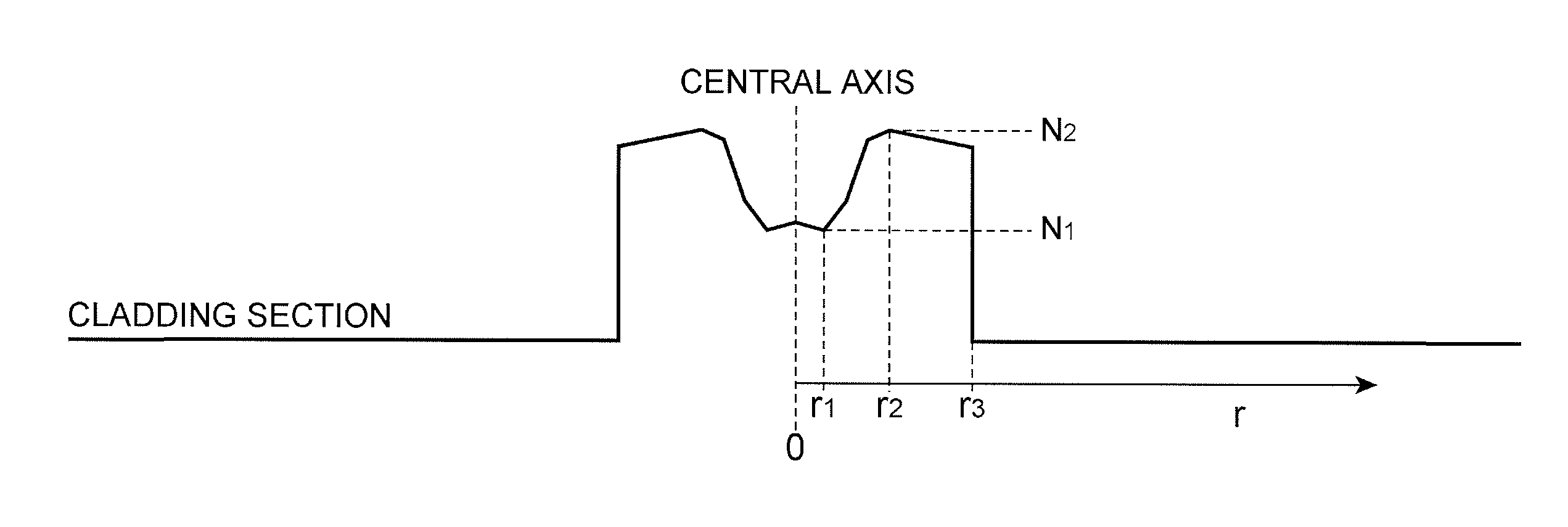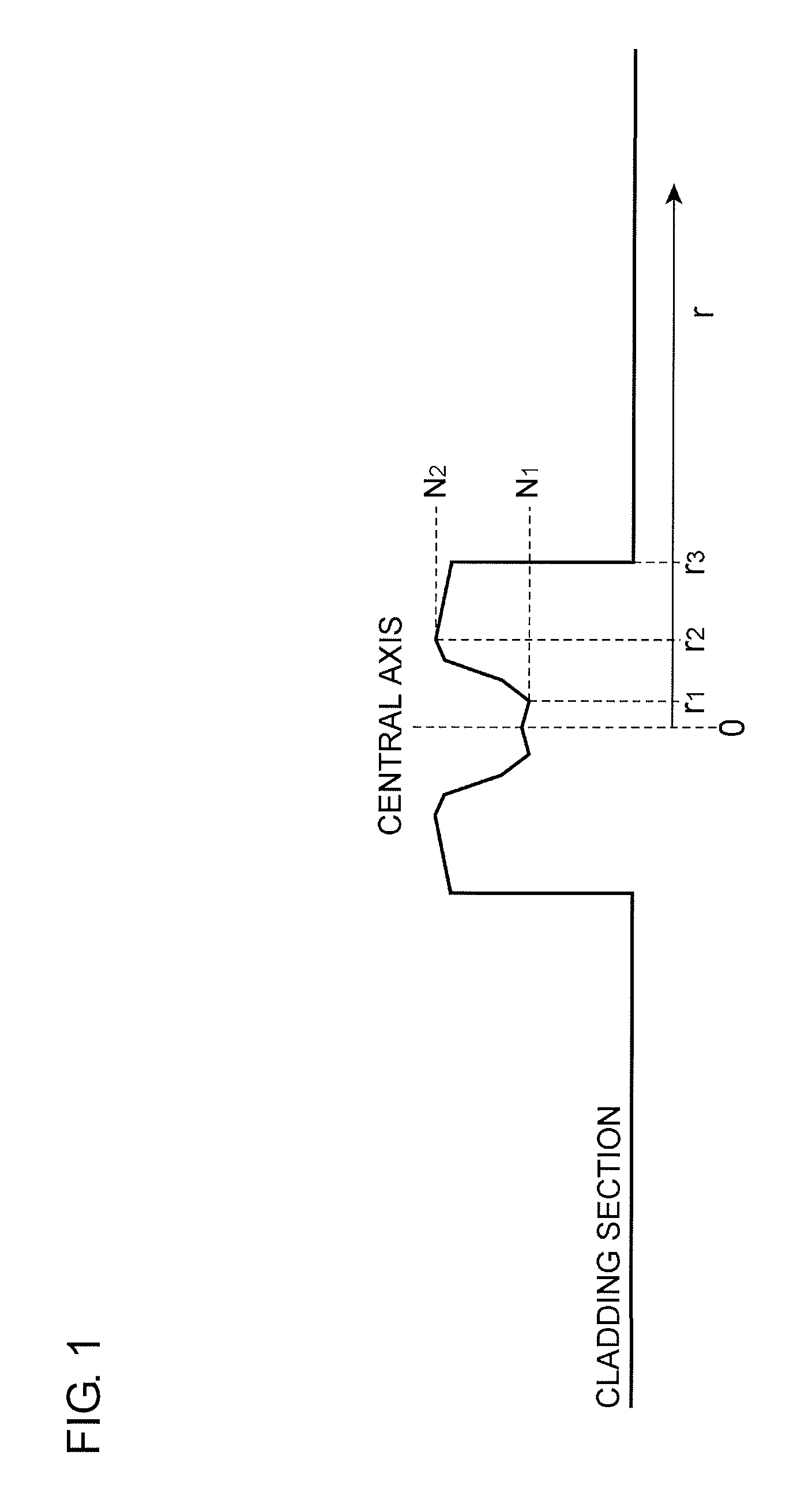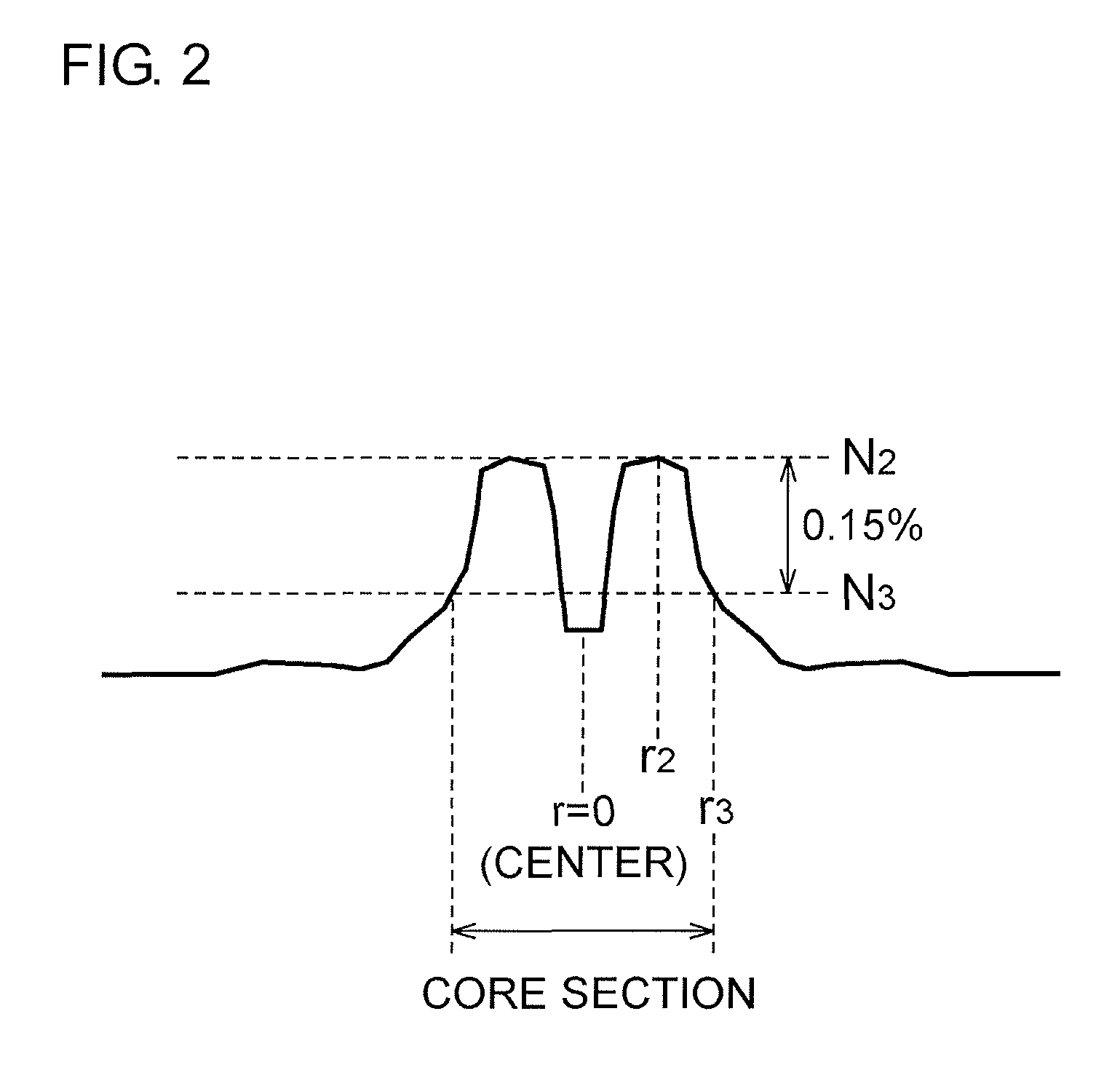Optical fiber
a technology of optical fibers and fibers, applied in the field of optical fibers, can solve the problems of high bend loss of optical fibers, low productivity, and large attenuation, and achieve the effect of improving osnr
- Summary
- Abstract
- Description
- Claims
- Application Information
AI Technical Summary
Benefits of technology
Problems solved by technology
Method used
Image
Examples
examples
[0073]Next, Examples 1 to 10 of optical fibers according to the present invention are described. Any of the optical fibers of Examples 1 to 10 is made of silica-based glass and was manufactured by a known method.
[0074]FIG. 9 is an illustration schematically showing a refractive index profile of each of the optical fibers according to Examples 1 to 5. In each of the optical fibers according to Examples 1 to 5, a core section included a first core portion with a low refractive index and a second core portion with a high refractive index. Chlorine, fluorine, and low-concentration GeO2 were doped to the first core portion. Chlorine, fluorine, and high-concentration GeO2 were doped to the second core portion. The cladding section also had a refractive index profile. Chlorine and fluorine were doped to a first cladding portion with a low refractive index, and chlorine was doped to a second cladding portion with a high refractive index.
[0075]FIG. 10 is an illustration schematically showing...
PUM
 Login to View More
Login to View More Abstract
Description
Claims
Application Information
 Login to View More
Login to View More - R&D
- Intellectual Property
- Life Sciences
- Materials
- Tech Scout
- Unparalleled Data Quality
- Higher Quality Content
- 60% Fewer Hallucinations
Browse by: Latest US Patents, China's latest patents, Technical Efficacy Thesaurus, Application Domain, Technology Topic, Popular Technical Reports.
© 2025 PatSnap. All rights reserved.Legal|Privacy policy|Modern Slavery Act Transparency Statement|Sitemap|About US| Contact US: help@patsnap.com



